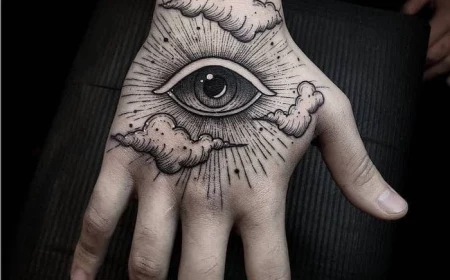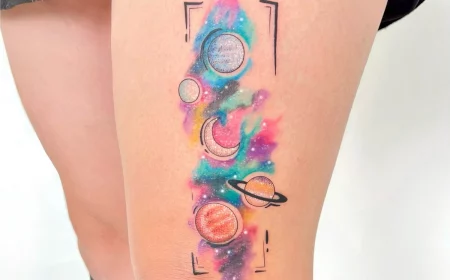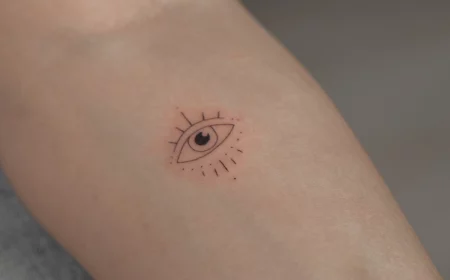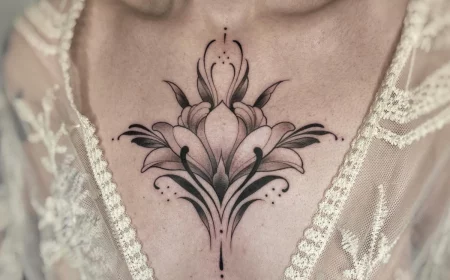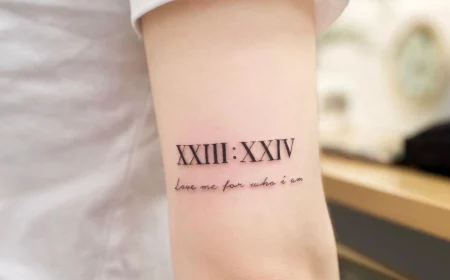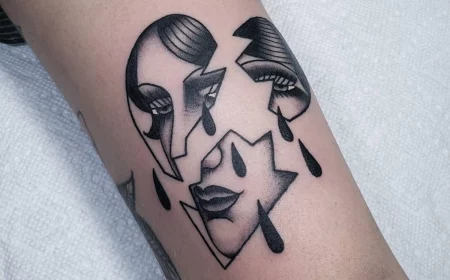Thinking About a Sunflower Tattoo? Here’s What You Actually Need to Know
I’ve been slinging ink for a long time, and I’ve seen design trends come and go. But the sunflower? That one’s a classic. It’s easily one of the most requested floral pieces, and honestly, I get it. Who isn’t drawn to that bright, happy flower that always turns to face the light? It’s a powerful symbol of positivity and loyalty.
In this article
But from my side of the needle, a sunflower is more than just a good vibe. It’s a technical puzzle. When you get it right, it’s a stunning piece of art that lasts a lifetime. I’ve probably tattooed hundreds of them, from tiny, delicate ones behind an ear to sprawling back pieces. So, I want to pull back the curtain and walk you through the whole process, just like I would with a client in my chair. We’ll get into everything—from what makes a good design to how to care for it so it doesn’t turn into a blurry mess in five years.
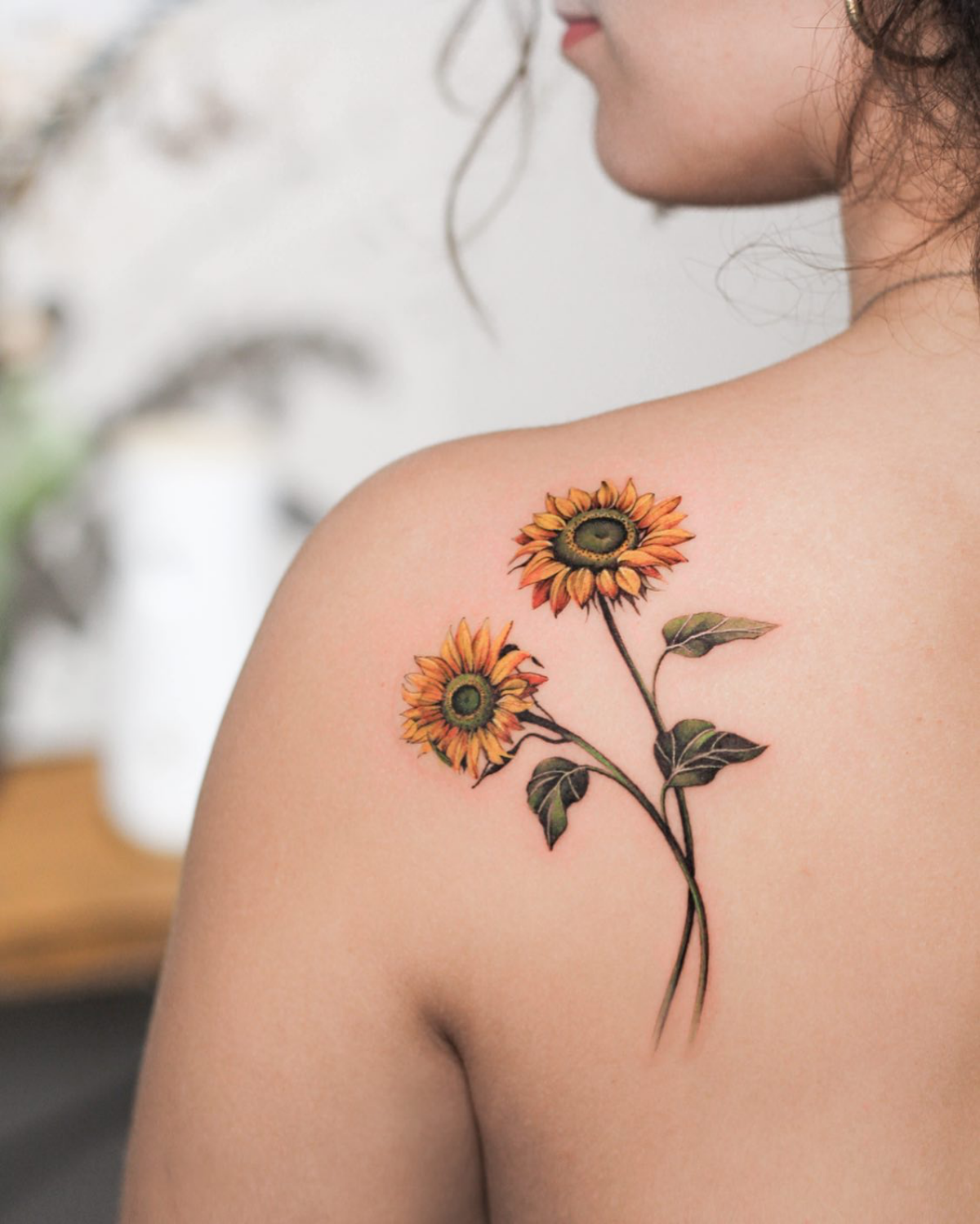
More Than Just a Pretty Flower
Everyone knows the basics: sunflowers mean happiness and adoration because they follow the sun. It’s a great message for a tattoo. But what makes it a good tattoo subject is its anatomy.
Believe it or not, a sunflower is deceptively complex. The two key parts are a real test of an artist’s skill:
- The Petals: There are a ton of them, and they all overlap. To keep it from looking like a flat, yellow blob, an artist needs to create depth with careful shading. This is what makes the petals look like they have volume and are actually catching the light.
- The Center: This is the make-or-break part. That dark, seedy middle isn’t just a circle; it’s a complex spiral pattern. Getting that texture right is crucial. Good artists will use techniques like stippling (dotwork) or fine cross-hatching to build it up. A rushed job here is a huge red flag—you’ll just get a dark, muddled patch instead of a detailed, living core.
When you’re scrolling through an artist’s portfolio, really zoom in on their floral work. Do the petals feel like they have shape? Is the center of the flower detailed or just filled in? That’s how you spot a pro.
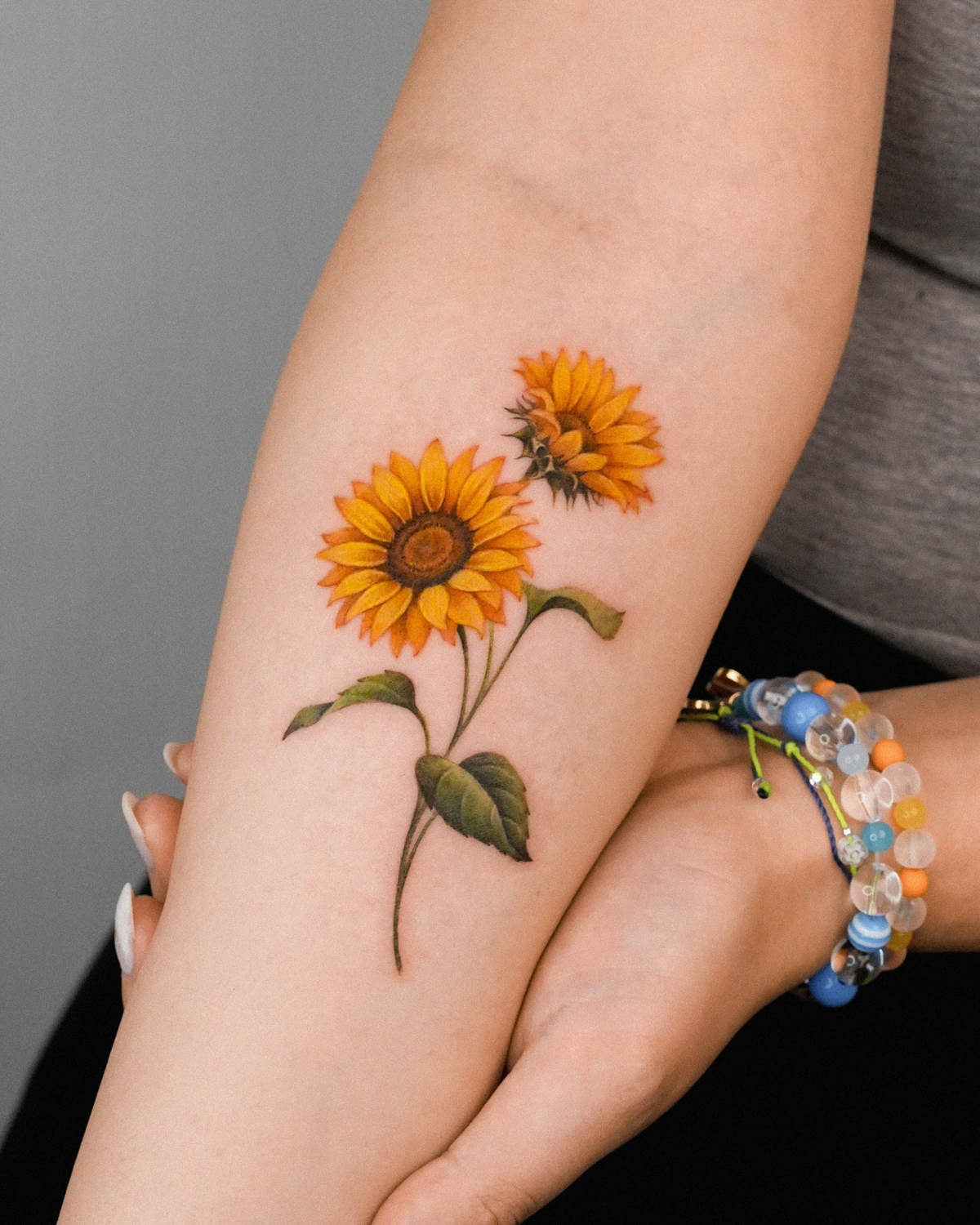
Placement, Pain, and Price: Where to Plant Your Sunflower
Okay, let’s talk about where this tattoo is going to live on your body. Placement is a three-way balancing act between how the tattoo will look, how much it’s going to hurt, and frankly, how much it’s going to cost.
Some spots are just easier to tattoo, which can impact the time and final price. Here’s my honest breakdown:
- The Sweet Spots (Forearm, Thigh, Calf): These are fantastic areas for detailed work. The skin is generally taut and smooth, making it a great canvas. Pain-wise, most people find these spots pretty manageable, maybe a 3-4 out of 10. They’re also easy to care for while healing, which is a big plus.
- The High-Motion Zones (Hands, Feet, Wrists, Neck): I always give a little warning for these placements. A tiny sunflower on the wrist is a cool look, but you have to be realistic. The skin here moves and regenerates constantly, meaning tattoos fade and blur much faster. You’ll likely be back for touch-ups.
- The Spicy Spots (Ribs, Sternum, Shoulder Cap): This is where an artist can do some amazing things, wrapping the design with the curves of your body. A sunflower draped over a shoulder cap looks incredible. But, heads up! These areas can be intense. We’re talking an 8/10 on the pain scale for ribs and sternum. The extra sensitivity and skin stretching required can also mean more time under the needle.
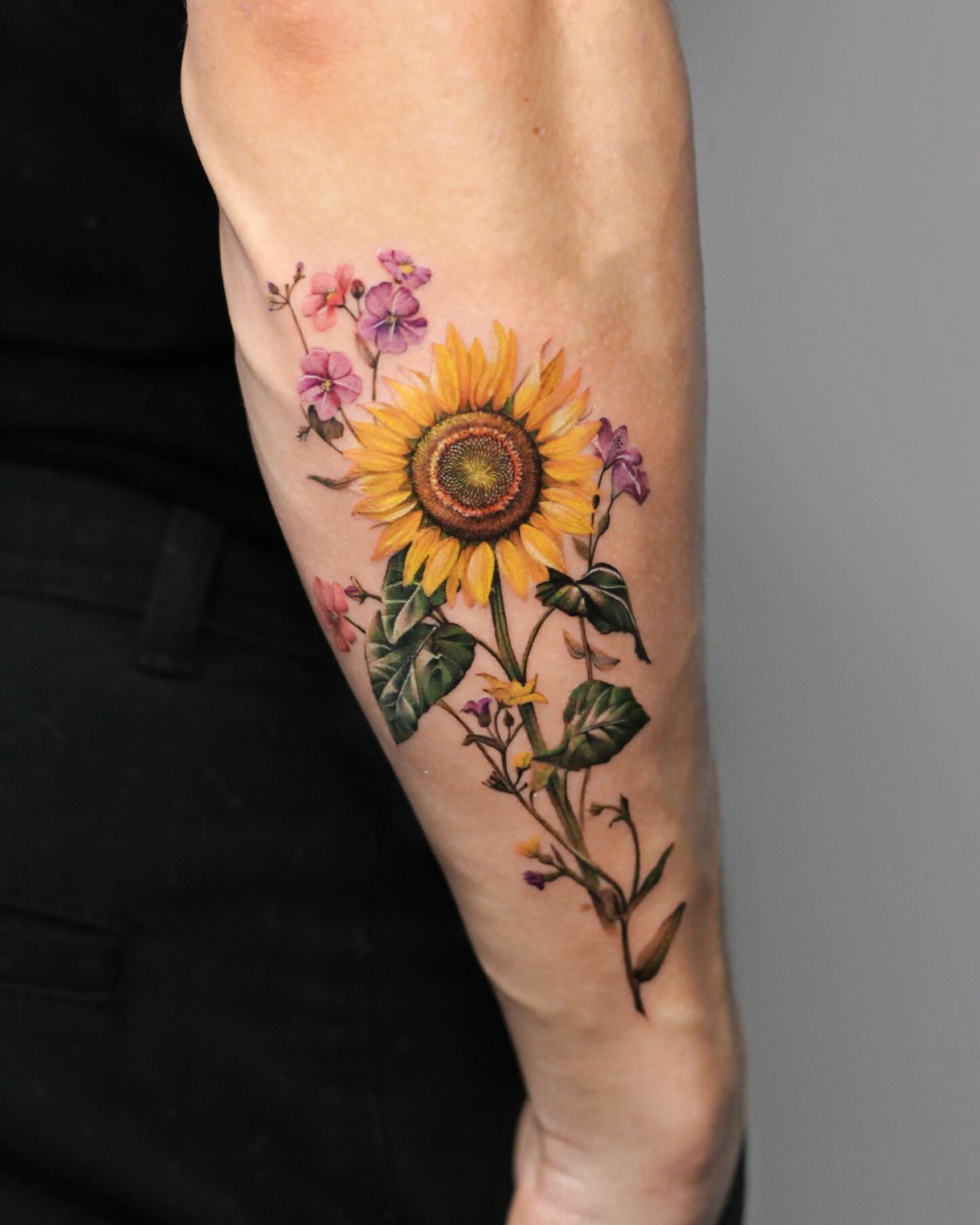
Let’s Talk Money: Finding an Artist and Understanding Costs
This is probably the most important part. Finding the right artist is a partnership, and you need to know what you’re getting into, budget-wise.
First off, don’t just search for “tattoo artist near me.” Look for someone whose style matches your vision. An artist who specializes in bold traditional work might not be the best fit for a delicate, fine-line piece. Their Instagram is your best friend here, but I’ll give you my number one tip: look for photos of HEALED work. Fresh tattoos always look crisp and bright. The real proof of skill is what that tattoo looks like a year later. Are the lines still sharp? Is the color solid?
Now, for the question everyone has but is afraid to ask: How much does it cost?
Let’s be real. A good tattoo isn’t cheap. Most reputable artists charge by the hour, typically anywhere from $150 to $300+ an hour, depending on their skill and location. Most shops also have a “shop minimum,” which could be $100-$150, covering the cost of a sterile setup even for a tiny tattoo.

So, do the math. A detailed, palm-sized sunflower could easily take 2-3 hours. You’re looking at a piece that could cost anywhere from $300 to $900. Don’t let that price shock you; you’re paying for permanent art from a skilled professional working in a sterile environment.
During your consultation (which should always happen for a custom piece!), be ready to have an open conversation. Here are a few questions you should absolutely ask:
- What is your hourly rate and your shop minimum?
- Can I see healed photos of your work, specifically florals if possible?
- What is your deposit policy? (Most artists require a non-refundable deposit to book).
- How should I prepare for my appointment?
If an artist seems cagey about prices, doesn’t require a consultation, or pressures you into a design you don’t want, walk away. A true professional respects your vision and your budget.
A Sunflower for Every Style
One of the best things about a sunflower is how it works in so many different tattoo styles.

- Black and Grey Realism: This is all about texture and depth without color. It’s a time-consuming style that requires a lot of patience to build up soft shading and detailed stippling for the center. The result is timeless and elegant.
- American Traditional: Bold will hold! This style uses heavy black outlines and a limited palette of bright yellow, green, and black. It’s not meant to be realistic; it’s about creating a powerful, readable image that ages incredibly well.
- Fine-Line & Micro-Realism: These can look like delicate drawings on the skin. They’re gorgeous but, to be frank, they have a shorter shelf-life. The tiny ink deposits are more likely to fade or spread over a decade. They demand an expert hand and diligent sun protection.
- Watercolor: This style mimics a painting with soft edges and color splashes. A little secret, though: the best watercolor tattoos have a light black or grey linework structure underneath. This acts as a container, keeping the colors from blurring into an undefined blob as the tattoo ages.
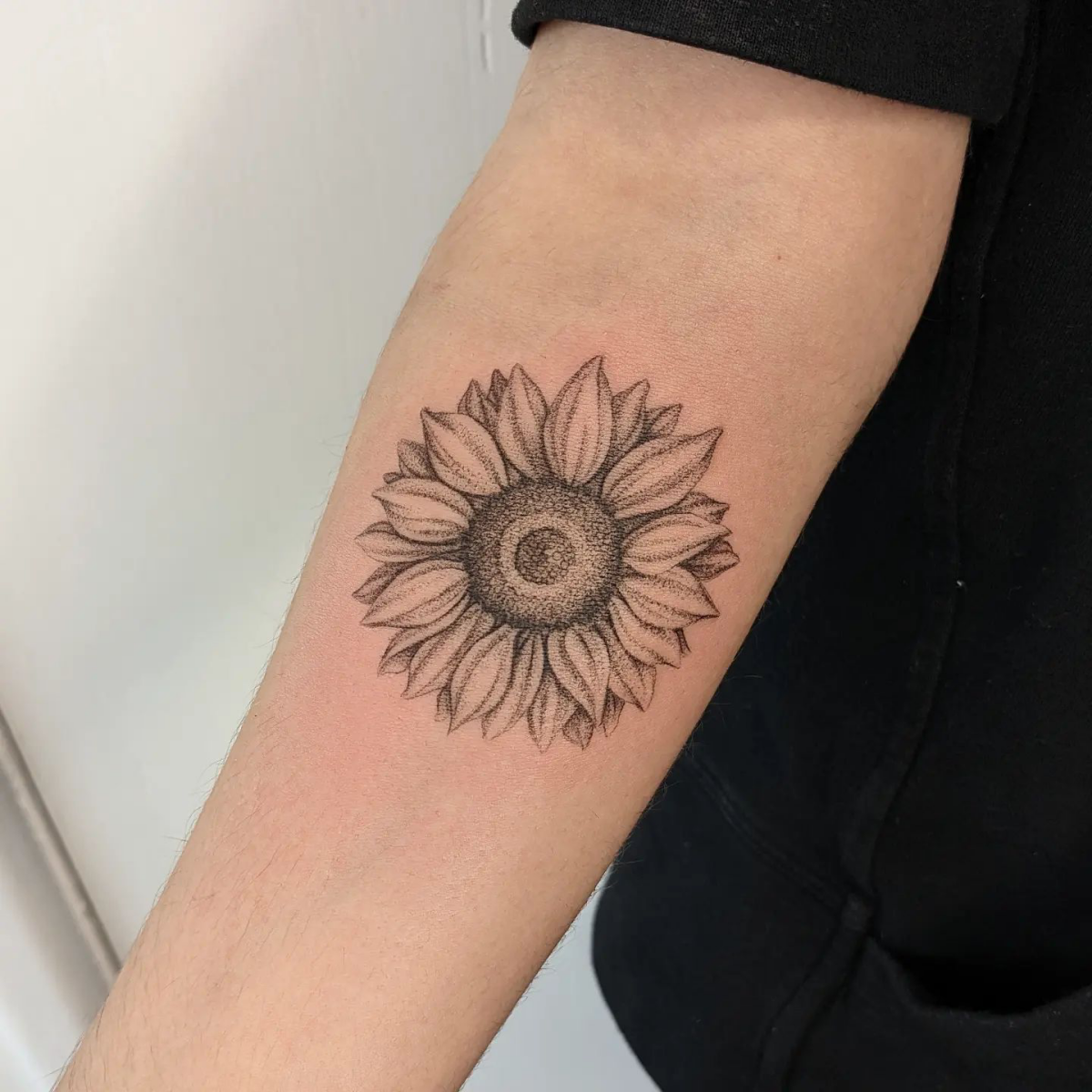
Prepping for the Big Day
A little prep work goes a long way in making your tattoo session smoother (and less painful). This is the insider info first-timers often miss.
The day before and the day of, make sure you HYDRATE. Drink lots of water. And please, eat a solid meal an hour or two before your appointment. Your body is about to go through a bit of an ordeal, and running on empty is a recipe for feeling faint. I always tell my clients to bring a sugary drink and a small snack, like a granola bar or candy. It can be a lifesaver if your blood sugar dips. Also, wear comfy, loose clothing that gives easy access to the area being tattooed. No one wants to be wrestling with skinny jeans to get to a thigh piece.
The Healing Process: Now It’s Your Turn
Once you walk out of the studio, the tattoo’s future is in your hands. A fresh tattoo is an open wound, and you have to treat it like one. Aftercare is not optional.
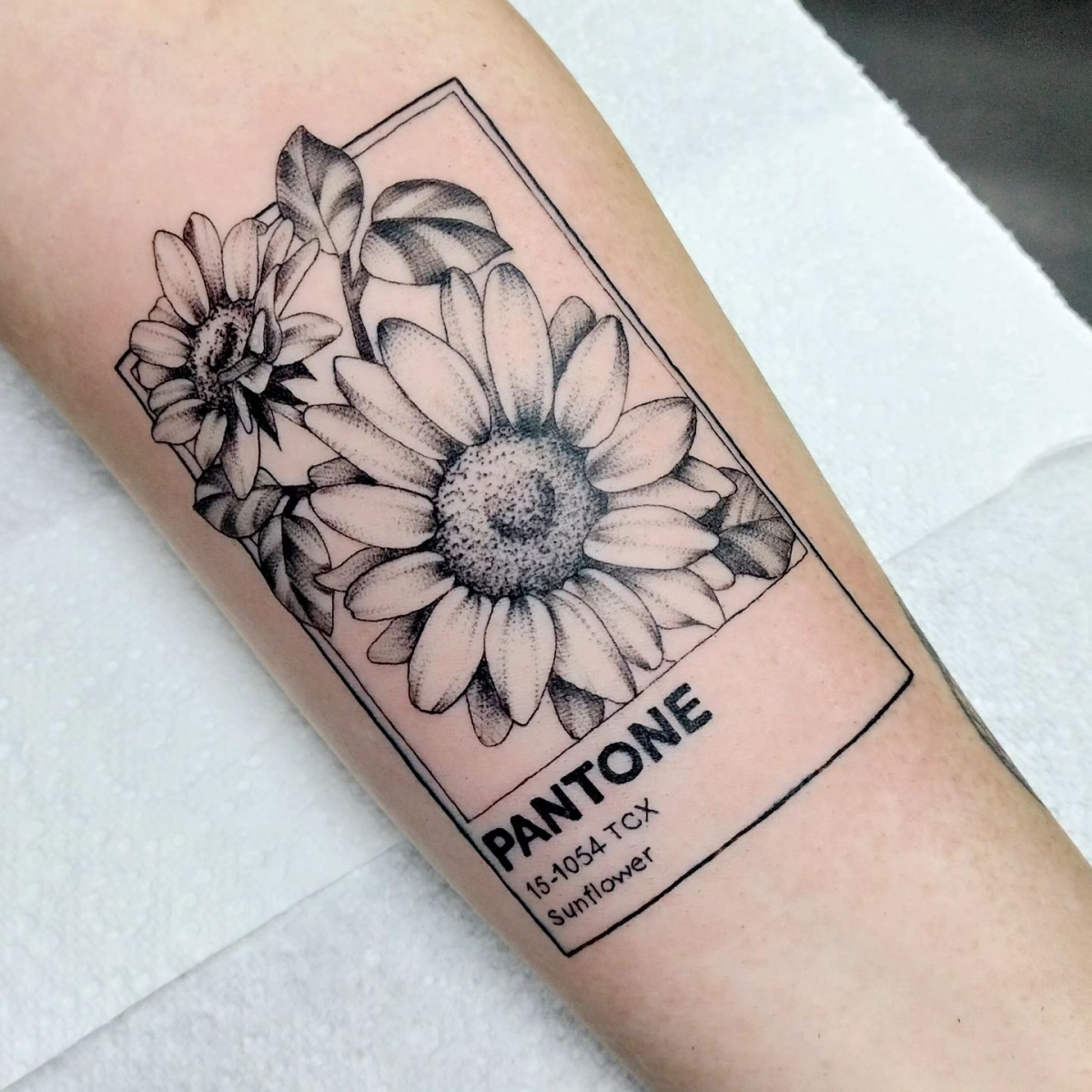
Your artist will give you specific instructions—follow them! Generally, you’ll either leave with a traditional plastic wrap (to be removed after a few hours) or a clear adhesive film like Saniderm (which can stay on for several days).
Once the wrap is off, the routine is simple. Gently wash the tattoo 1-2 times a day with lukewarm water and a mild, unscented soap—something like Dial Gold is a studio classic for a reason. Pat it dry with a clean paper towel (never a cloth towel!).
After a day or two, you can start moisturizing. And here’s the key: apply a VERY thin layer. Your tattoo should not look shiny, wet, or goopy. Over-moisturizing is a common mistake that can mess up healing. A fragrance-free lotion like Lubriderm or Aquaphor is perfect. For a quick shopping list, all you really need is unscented soap, a good lotion, and paper towels—probably less than $25 for everything.
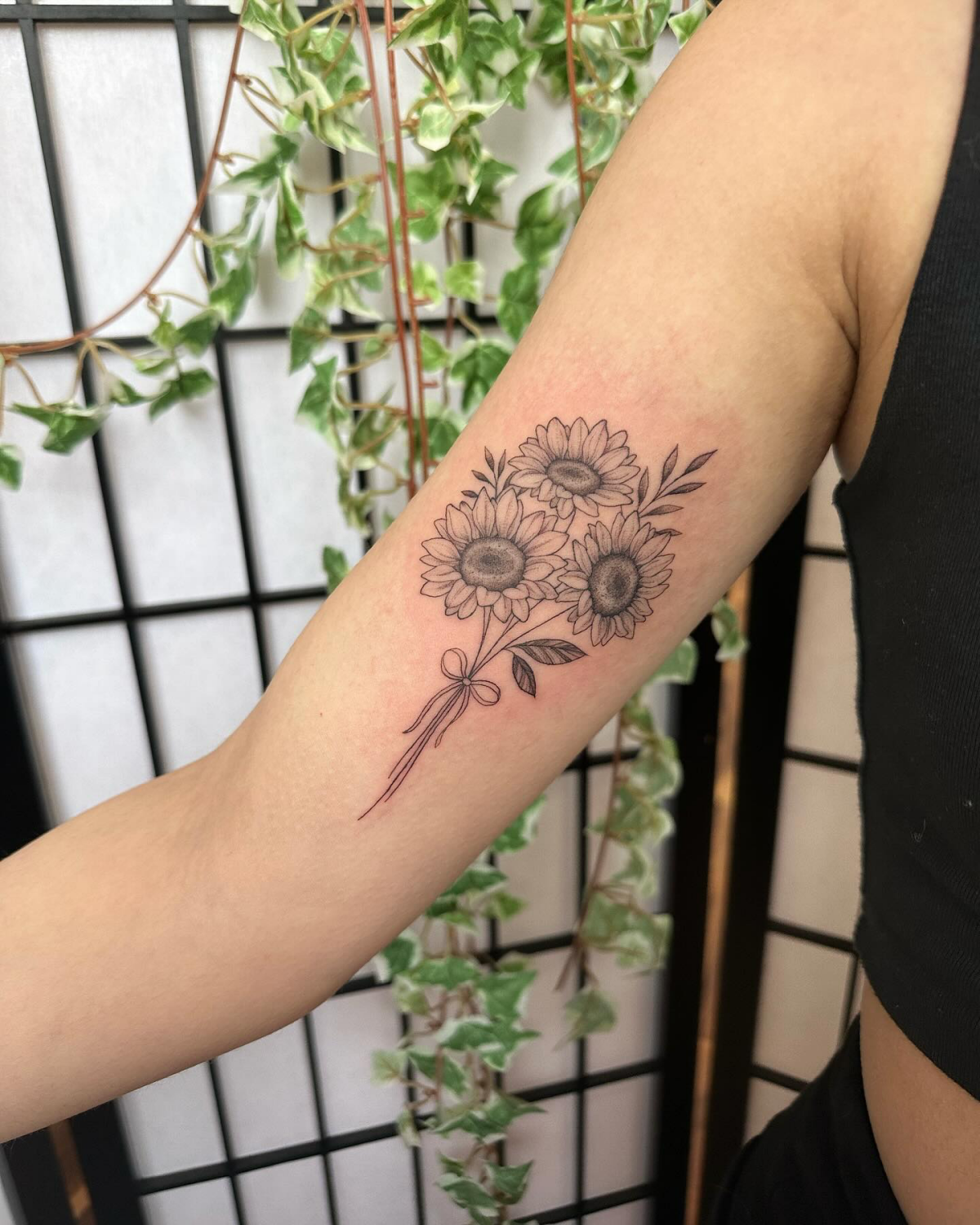
For the next two weeks, it’s going to get itchy and flaky like a sunburn. Do. Not. Scratch. Also, no soaking! That means no baths, swimming, or hot tubs. And keep it out of the sun.
And speaking of the sun, that’s the number one enemy of your tattoo for life. UV rays break down ink. A healed tattoo that’s constantly exposed will fade into a sad, blurry version of its former self. Using a high-SPF sunscreen is non-negotiable if you want your sunflower to stay bright and crisp for decades to come. You paid for it—protect your investment!
Galerie d’inspiration
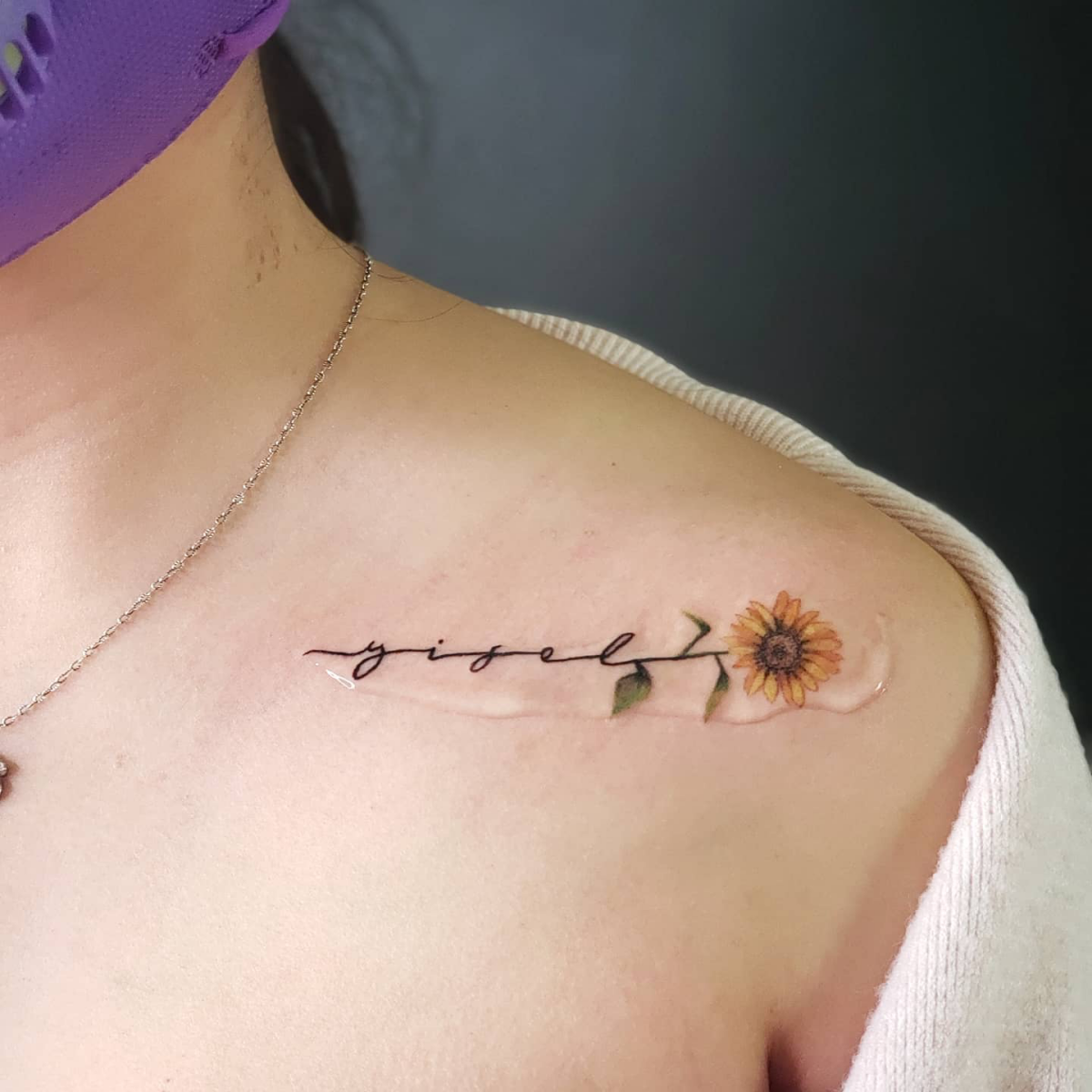
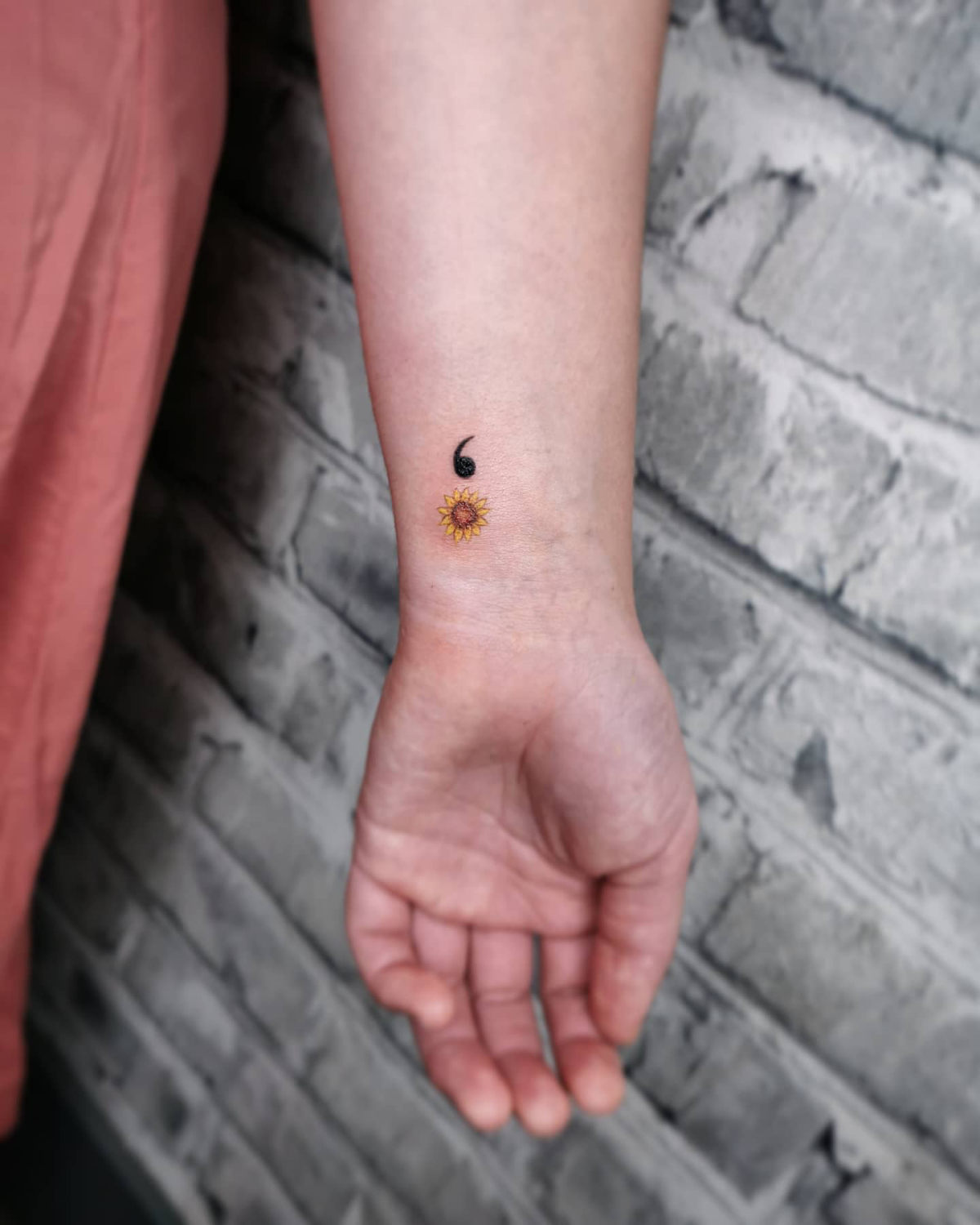
Color Realism: Vibrant, eye-catching, and captures the flower’s natural cheerfulness. Requires an artist skilled in color blending to avoid a flat look.
Black & Grey: Focuses on texture, shadow, and form. It can give the sunflower a more timeless, dramatic, or even somber mood. This style often ages gracefully, as line work and shading hold up well over time. The choice depends entirely on the emotion you want to convey.
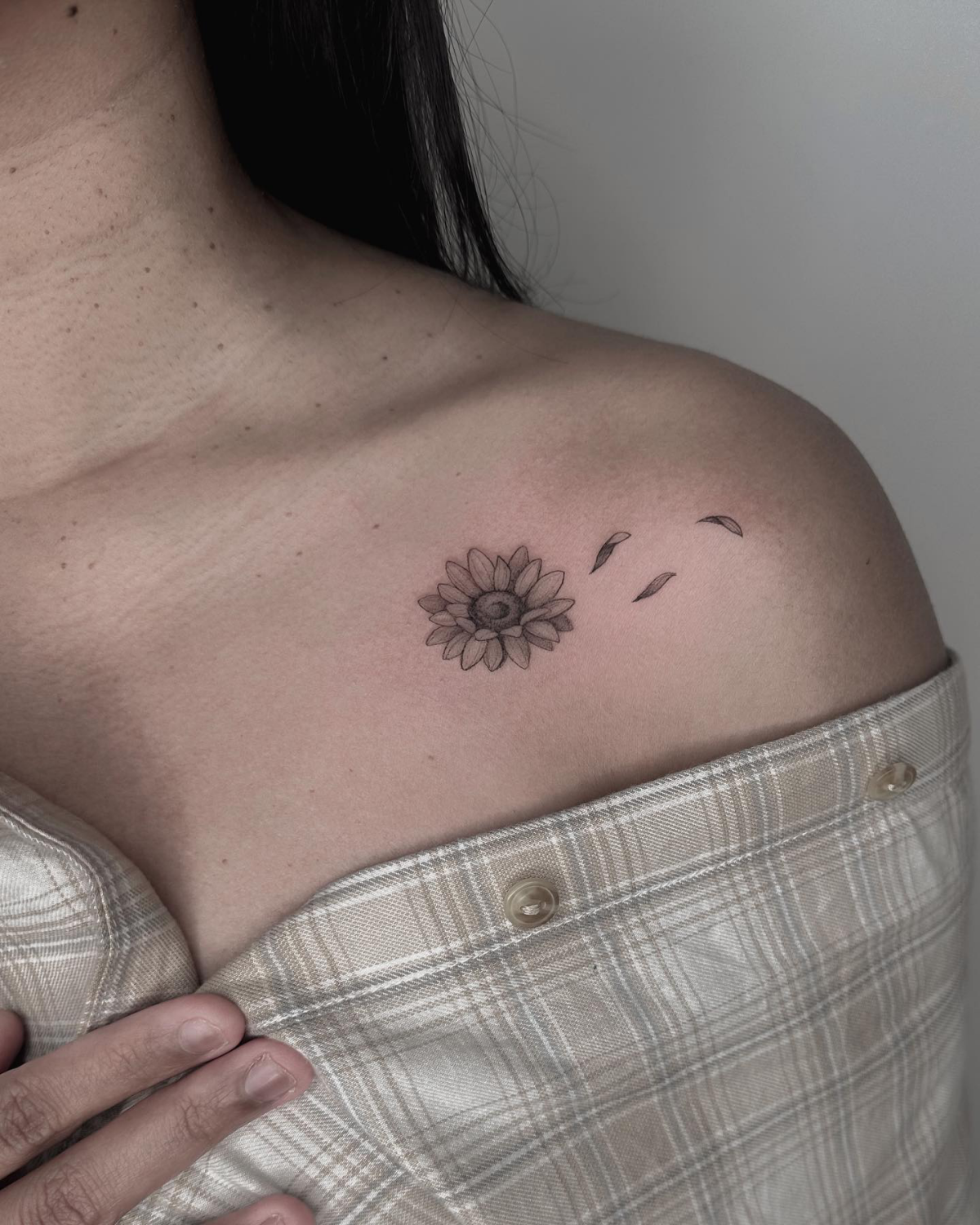
The center of a real sunflower is a perfect example of the Fibonacci sequence in nature.
This mathematical elegance is what a skilled tattooer aims to capture. When looking at portfolios, see if the artist uses dotwork (stippling) or intricate linework to replicate this natural spiral. A flat, black circle is a sign of a shortcut; a detailed, textured center shows a true appreciation for the flower’s complex form.
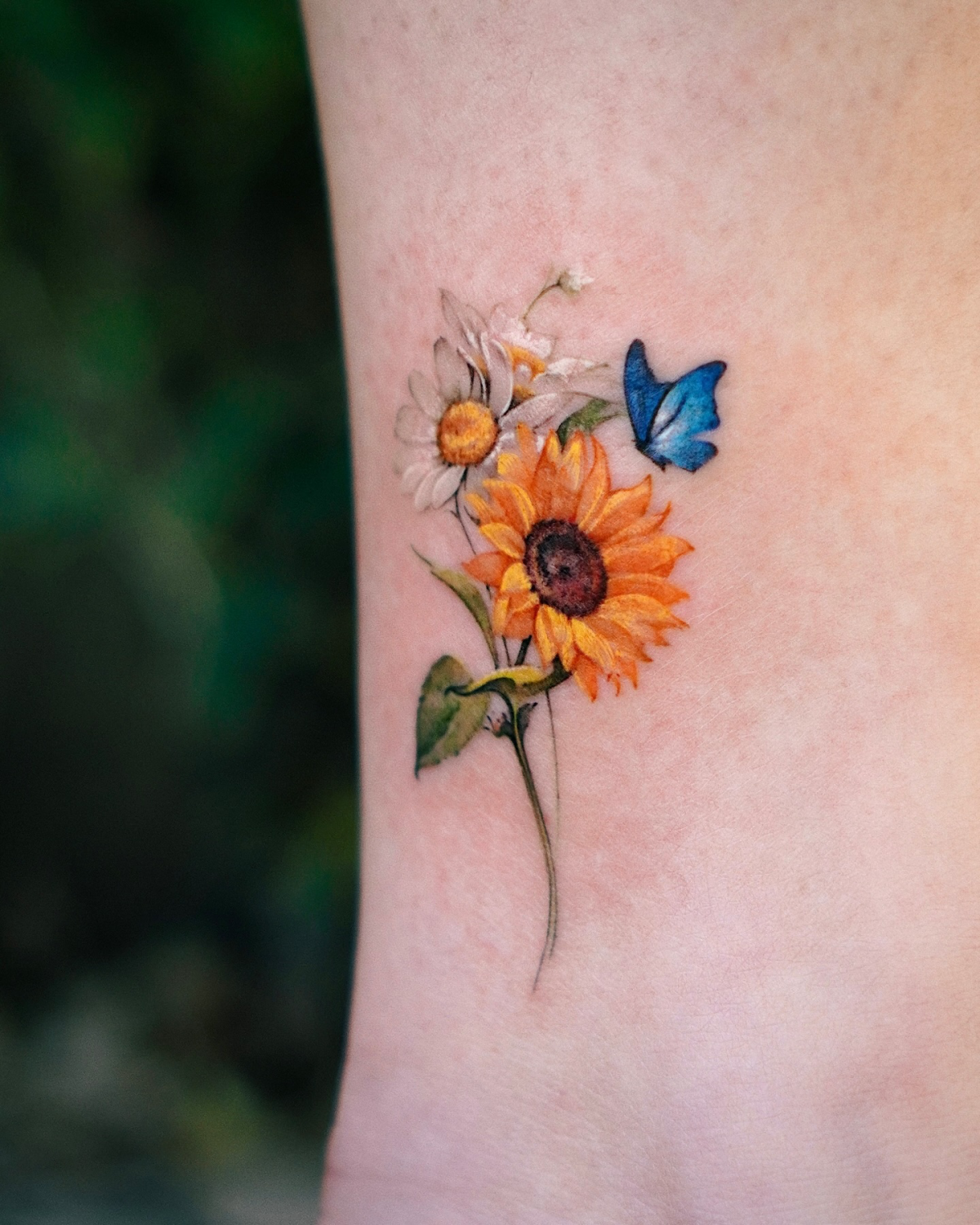
Your artist will give you specific instructions, but a solid aftercare kit is non-negotiable. Plan ahead and have these on hand for a smooth healing process:
- A gentle, fragrance-free soap like Dr. Bronner’s Baby Unscented.
- A dedicated tattoo-healing ointment for the first few days, such as Aquaphor or the vegan-friendly Hustle Butter Deluxe.
- A light, unscented lotion like Aveeno Daily Moisturizing Lotion for when it starts to peel.
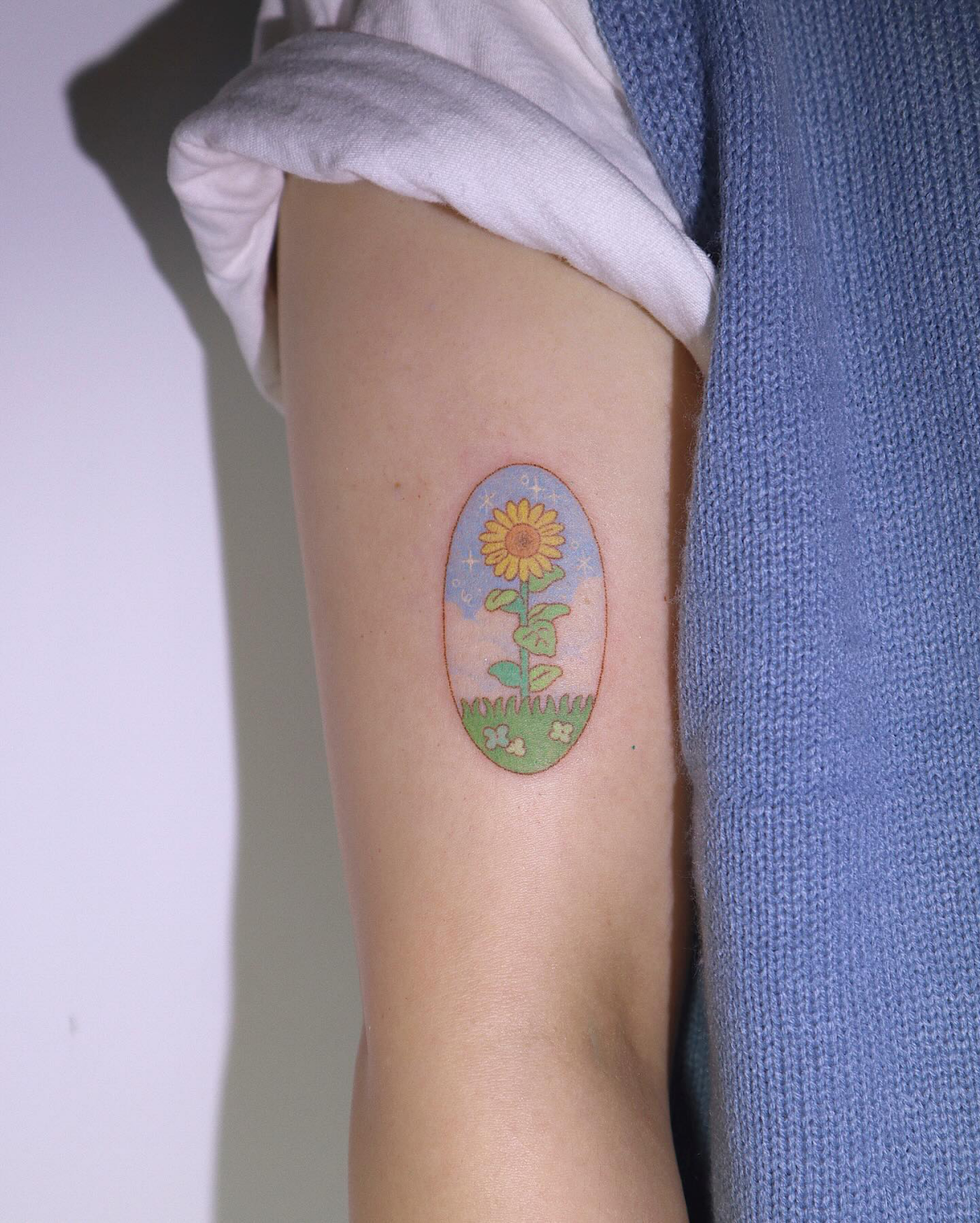
Can a sunflower tattoo be subtle?
Absolutely. The trend of ‘fine-line’ or ‘single-needle’ tattoos is perfect for this. A delicate, small sunflower on the ankle, wrist, or behind the ear offers a touch of positivity without being overt. The key is finding an artist who specializes in this style to ensure the fine lines stay crisp and don’t blur over time.
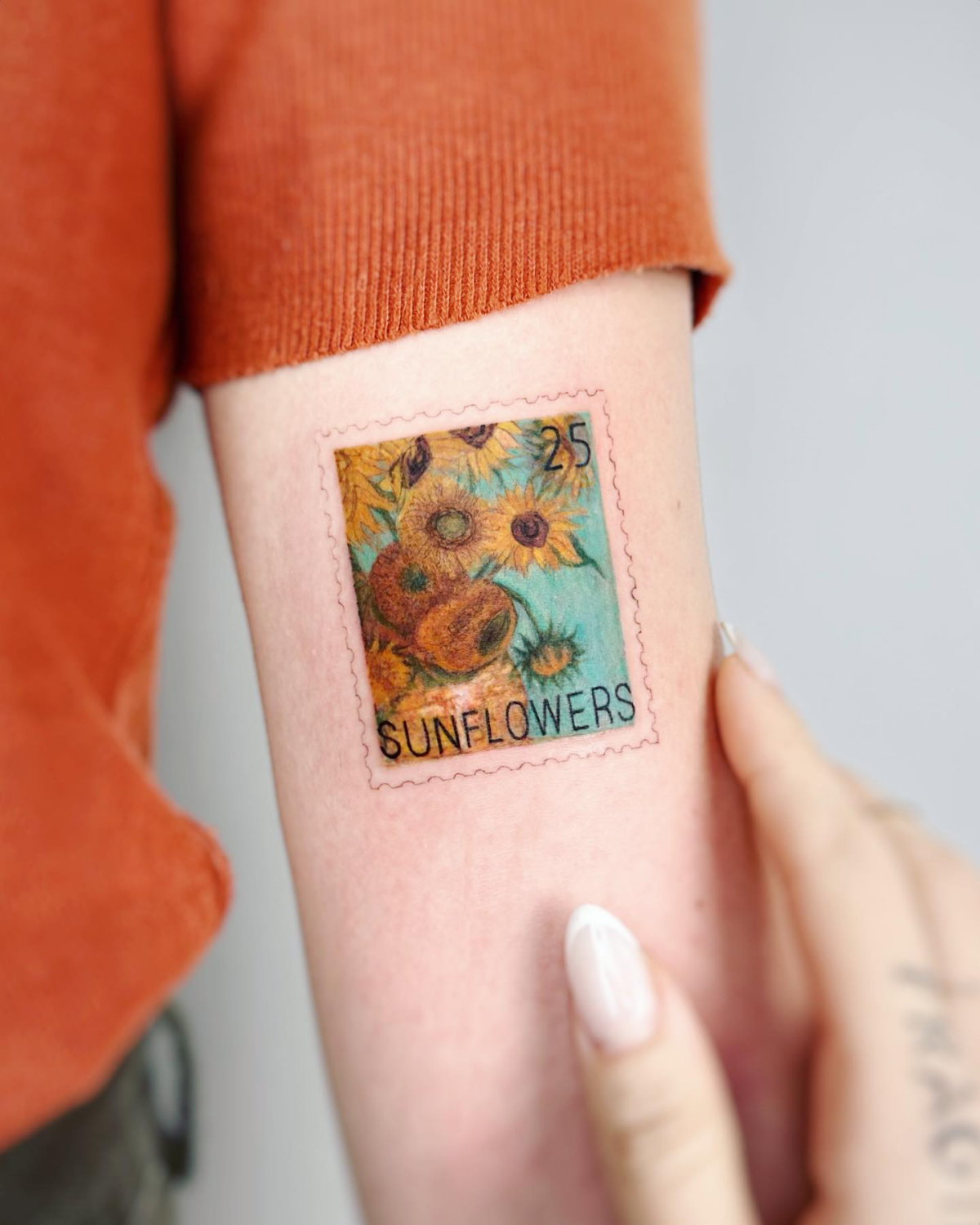
The single most important rule for long-term vibrancy: The sun is the enemy of yellow ink. Bright, sunny pigments are notoriously susceptible to UV damage, which can cause them to fade or dull faster than darker colors. To keep your sunflower brilliant for years, make a high-SPF sunscreen a non-negotiable part of your routine once the tattoo is fully healed.
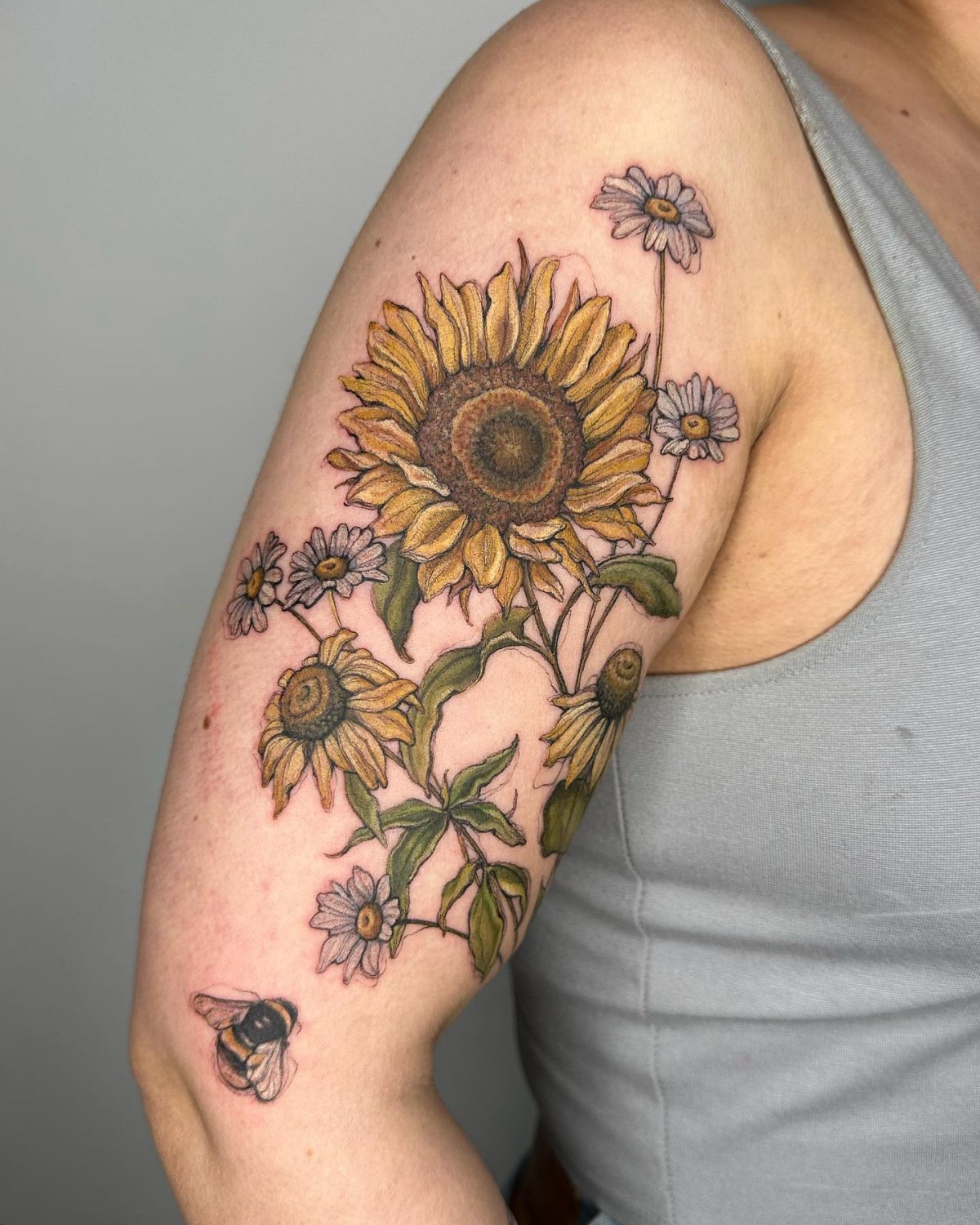
For a truly unique take, look beyond tattoo flash and into art history. Vincent van Gogh’s
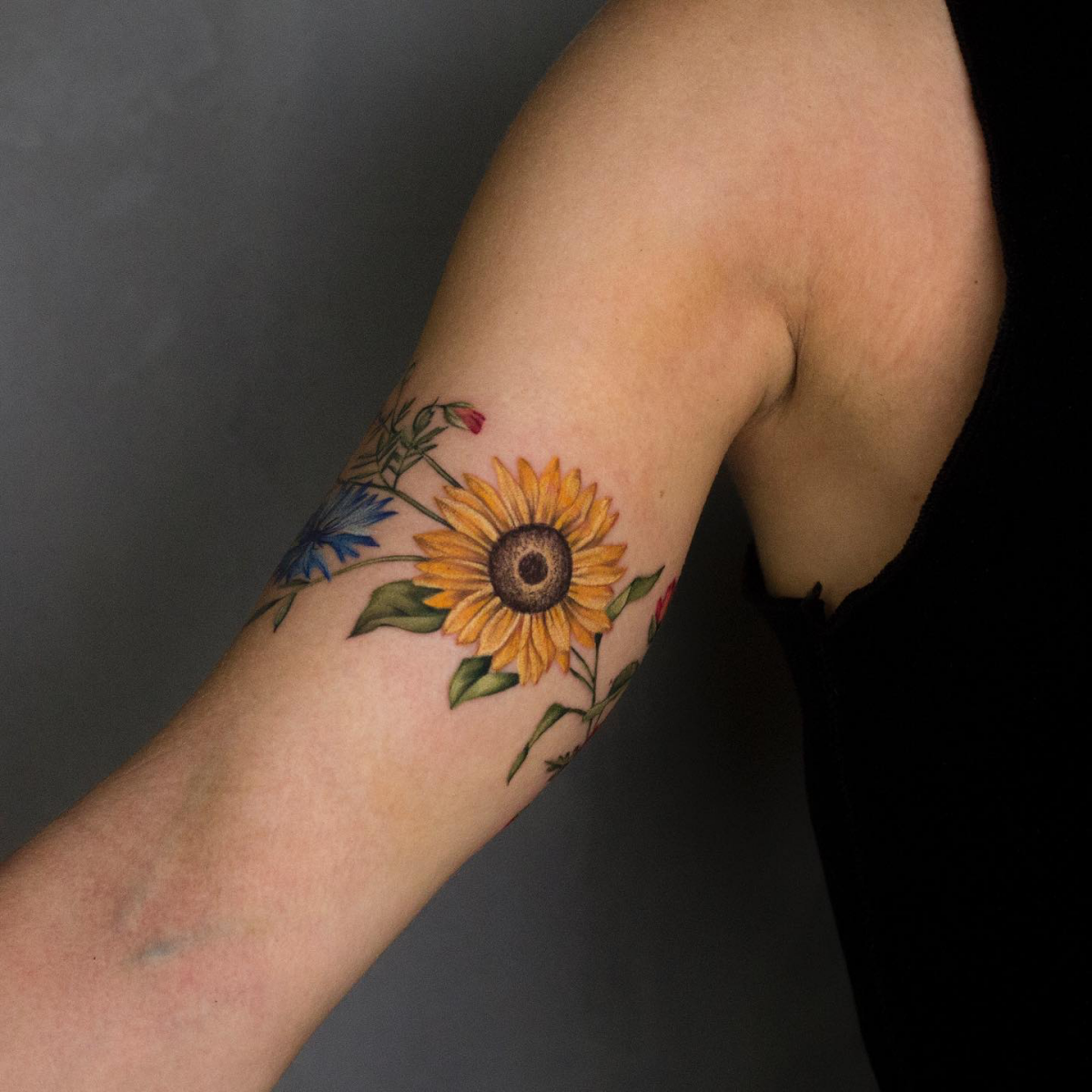
- It can symbolize transformation and new beginnings.
- It adds dynamic movement to a static flower.
- It creates a beautiful contrast between light and dark elements.
The secret? Pairing your sunflower with a butterfly. This classic combination deepens the meaning of the tattoo, representing growth, resilience, and the beauty of change.
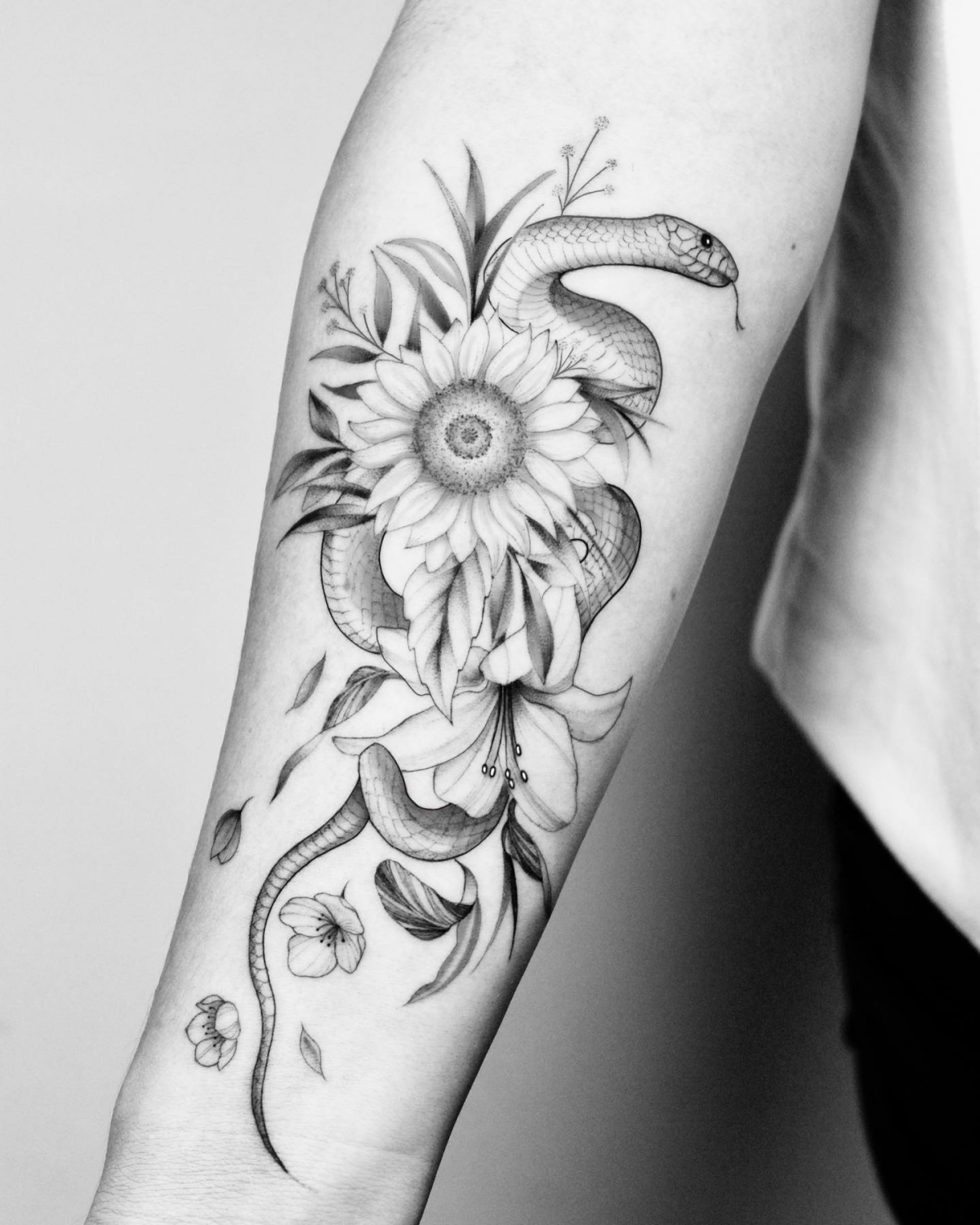
A common mistake is trying to cram too much detail into a tiny tattoo. A hyper-realistic sunflower that looks stunning as a large back piece will become a muddy, unrecognizable blob if shrunk to two inches on a wrist. Trust your artist if they suggest simplifying the design for a smaller scale; they’re protecting you from future disappointment.
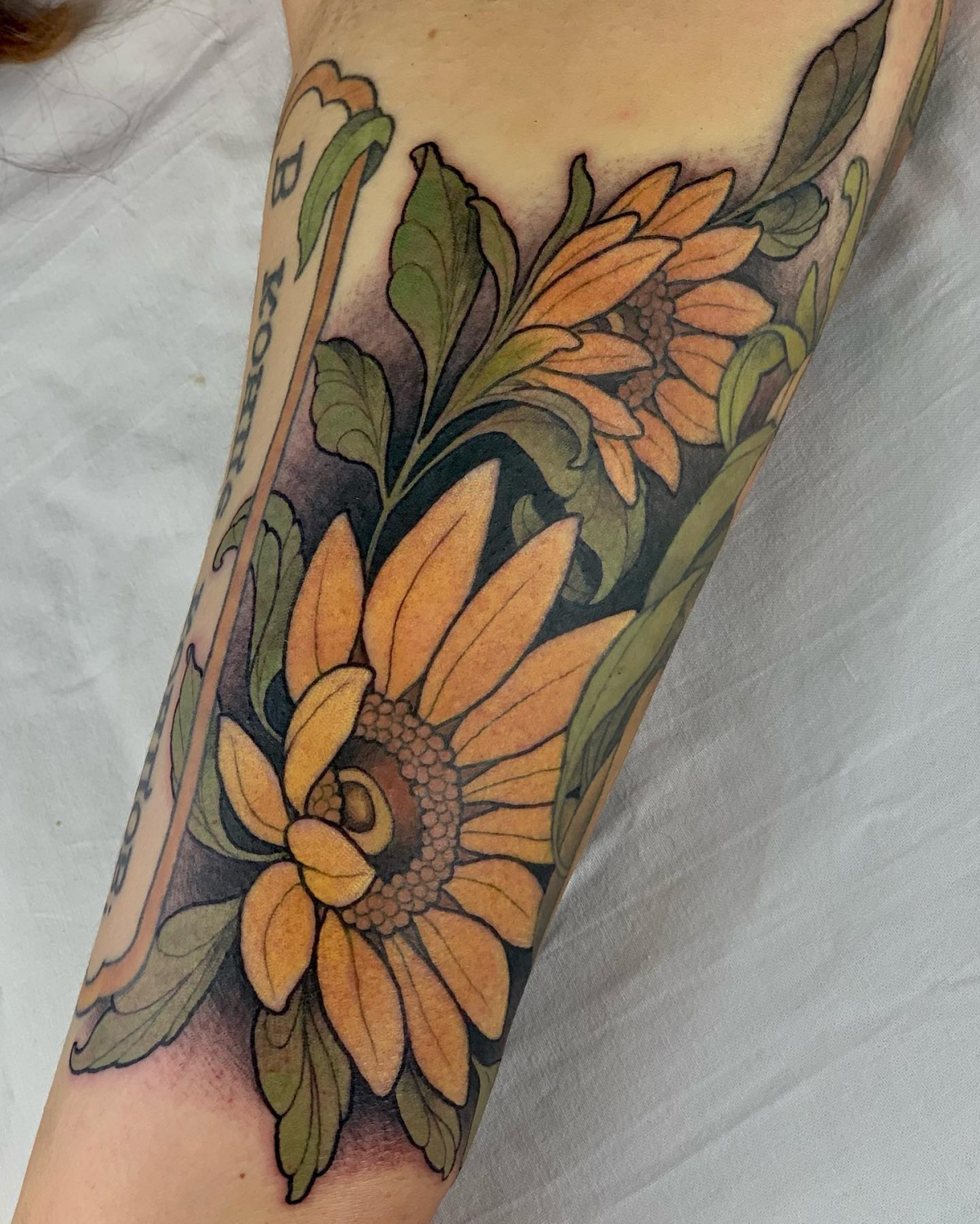
A 2021 study in the journal *Molecules* highlighted that certain yellow tattoo inks can be more prone to photochemical reactions, leading to faster degradation under UV light.
This scientific reality underscores your artist’s advice: protect your tattoo from the sun! Using a quality sunblock like EltaMD UV Clear is not just about preventing sunburn; it’s about preserving the molecular integrity and brightness of your ink, especially those beautiful yellows and oranges.
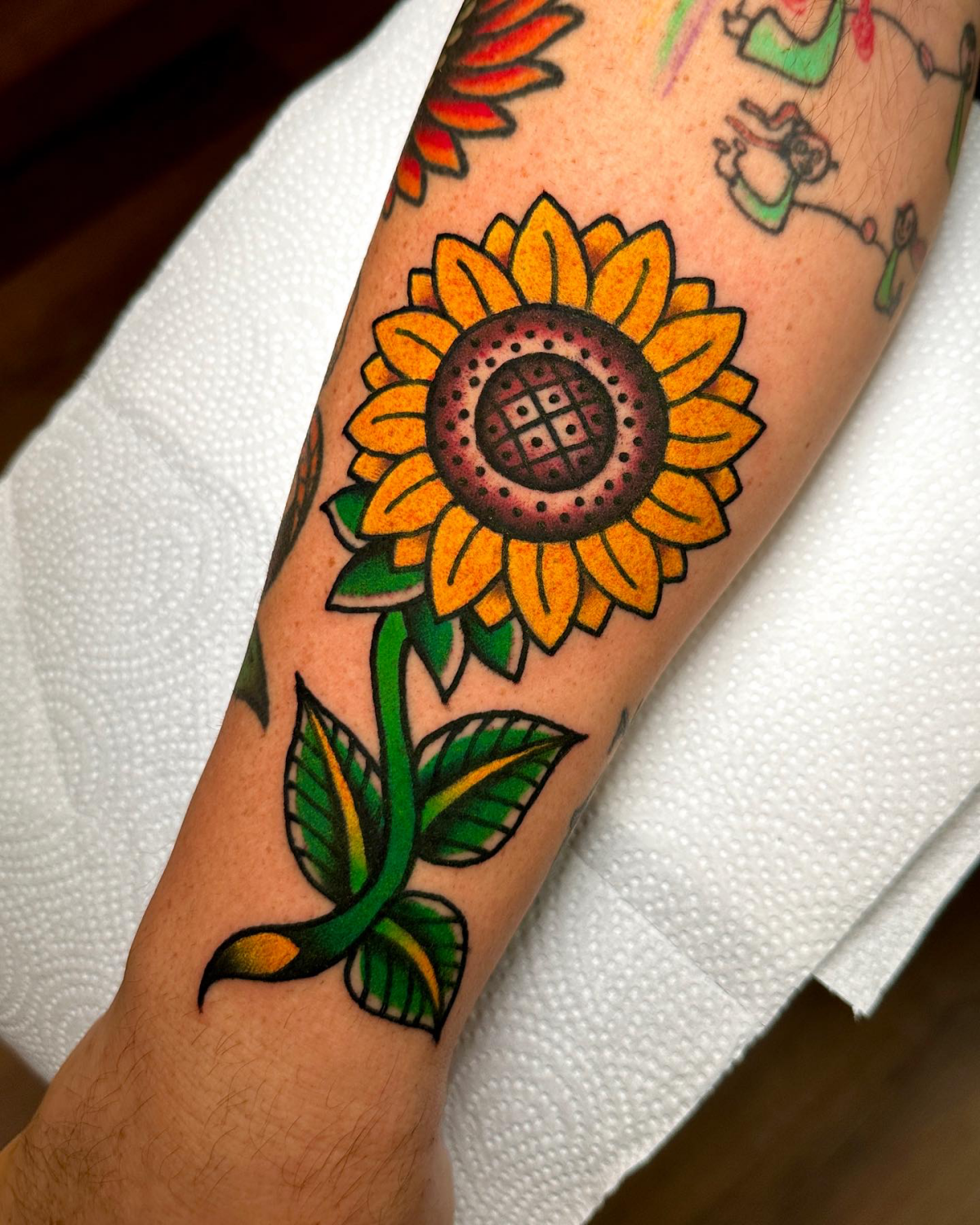
A sunflower tattoo doesn’t have to stand alone. Combining it with other elements tells a richer story. Consider adding a semicolon (a powerful symbol of mental health survival and continuity) or a small bee, which represents community, diligence, and the interconnectedness of nature.
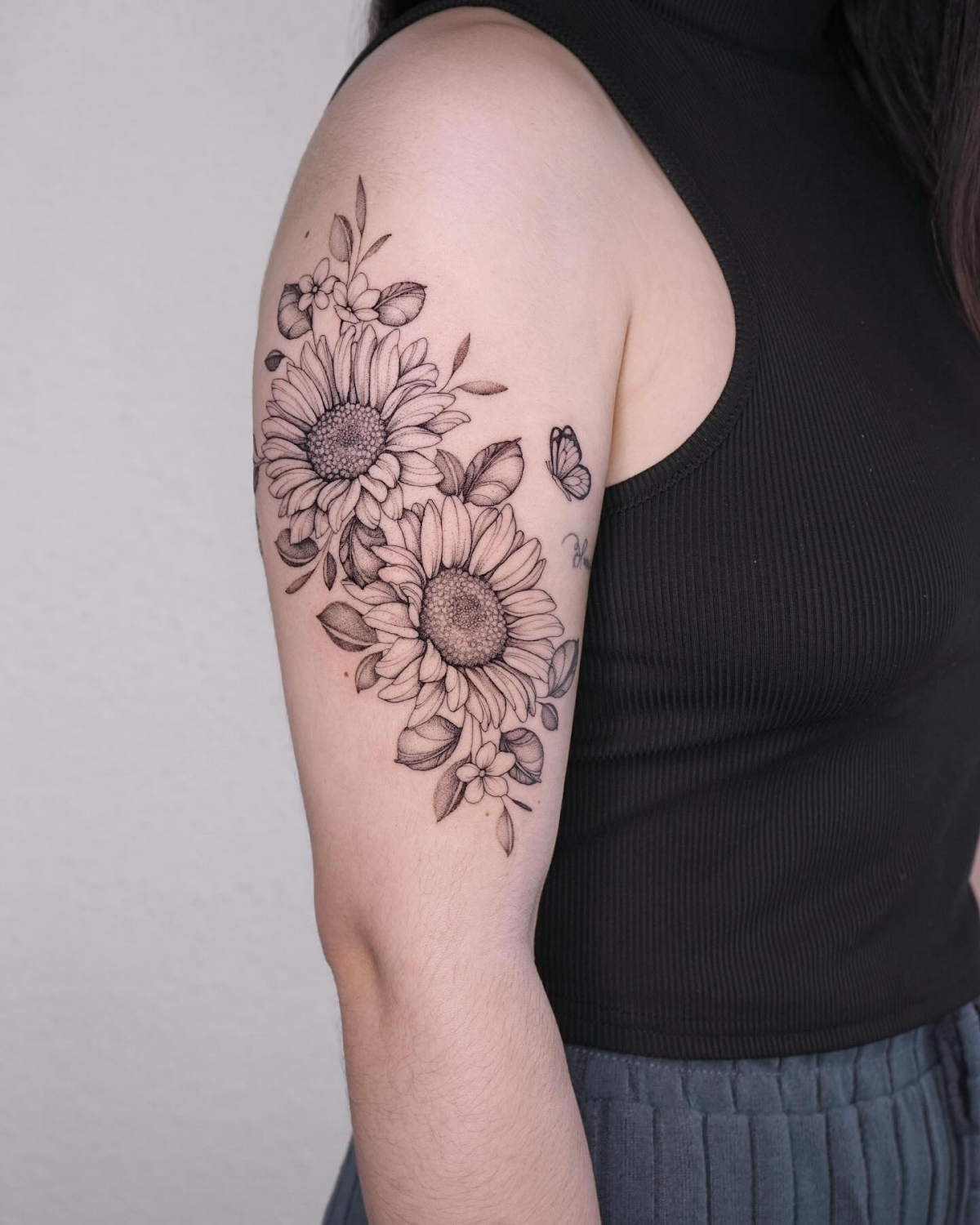
The consultation is more than just a booking; it’s a creative collaboration. Instead of just showing a photo, talk to your artist about *why* you want a sunflower. Is it for joy? In memory of someone? A symbol of personal growth? Sharing this story helps the artist capture the right mood in the design, turning a flower into your personal emblem.
In Greek mythology, a nymph named Clytie stared at the sun god Apollo for so long that she turned into a flower—the sunflower—forever turning her head to follow him.

